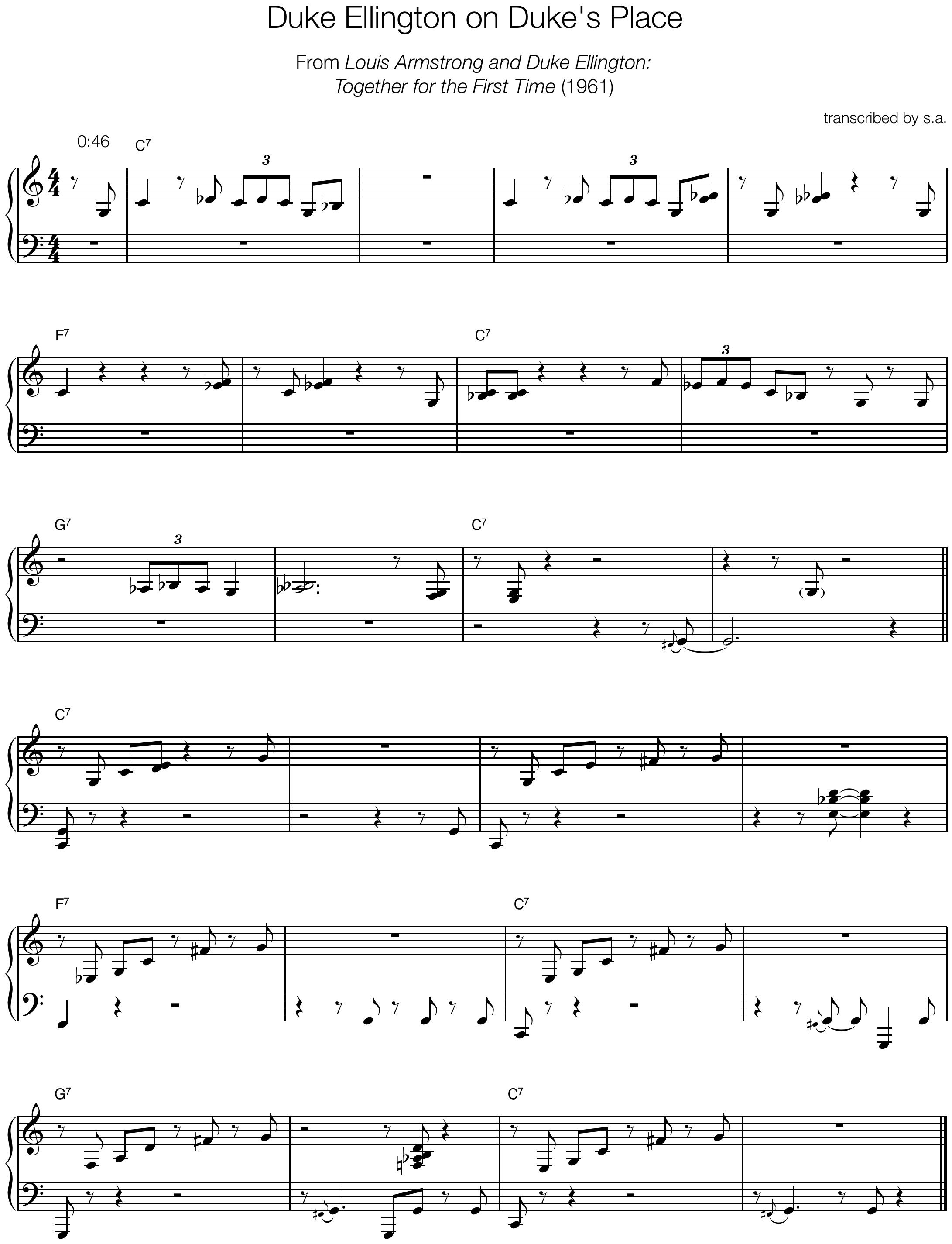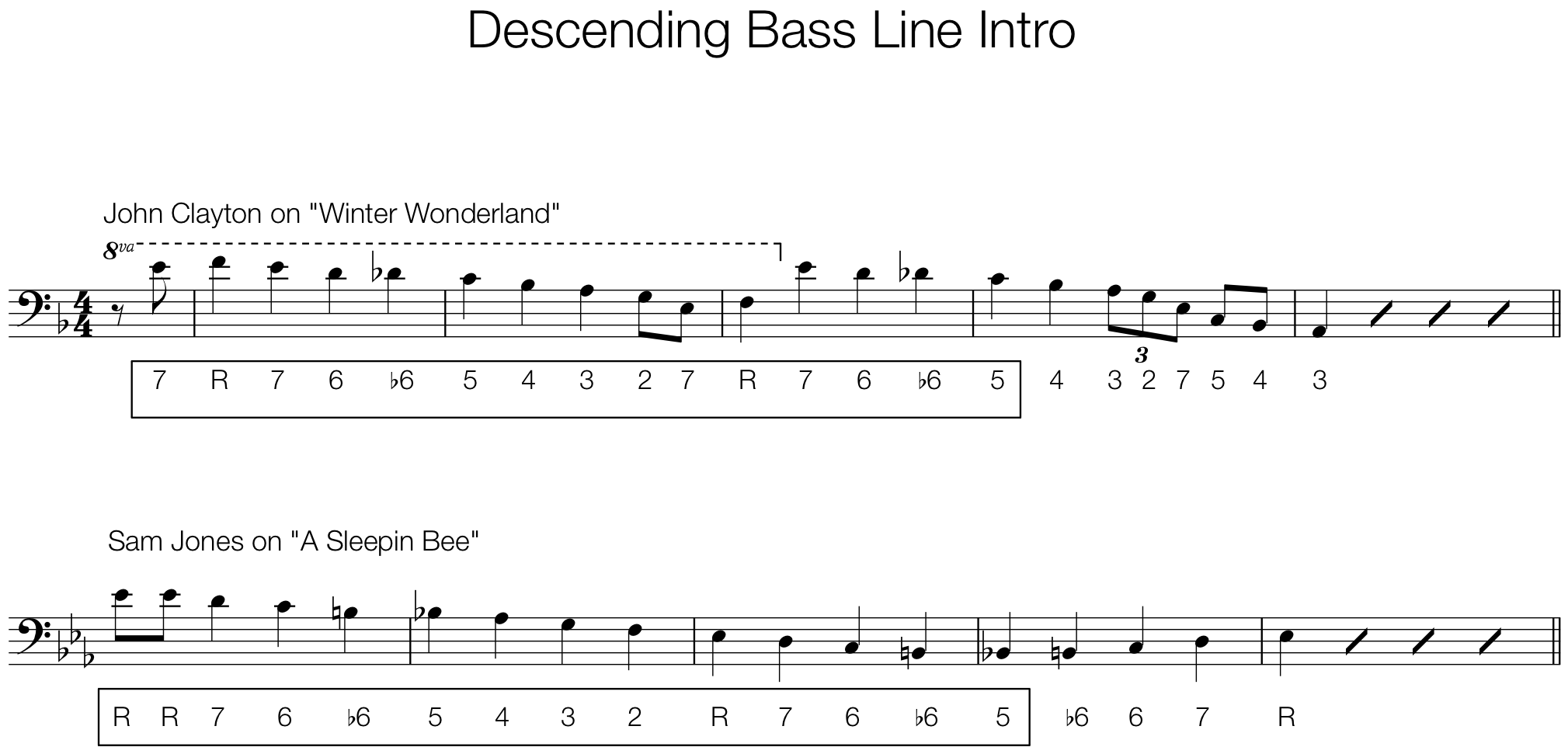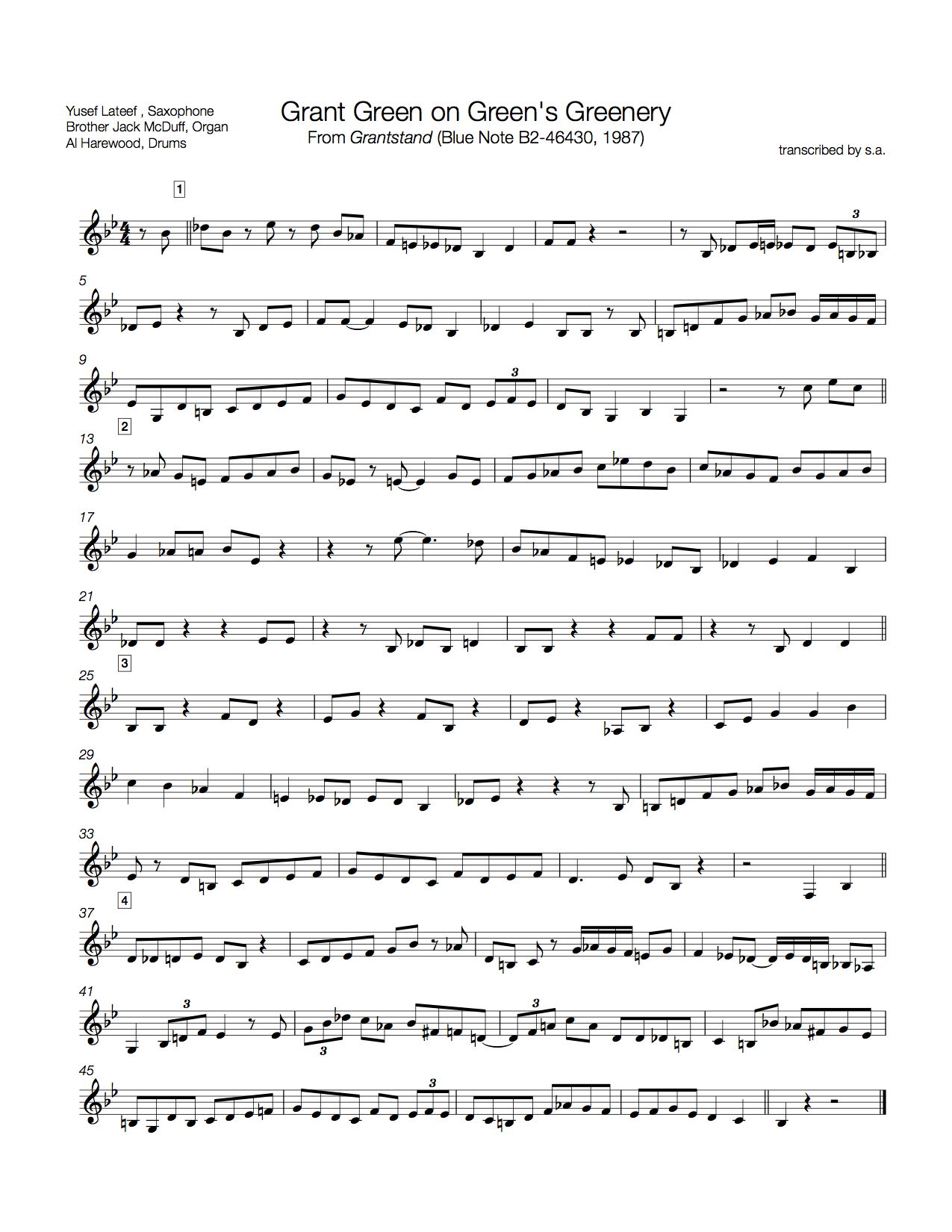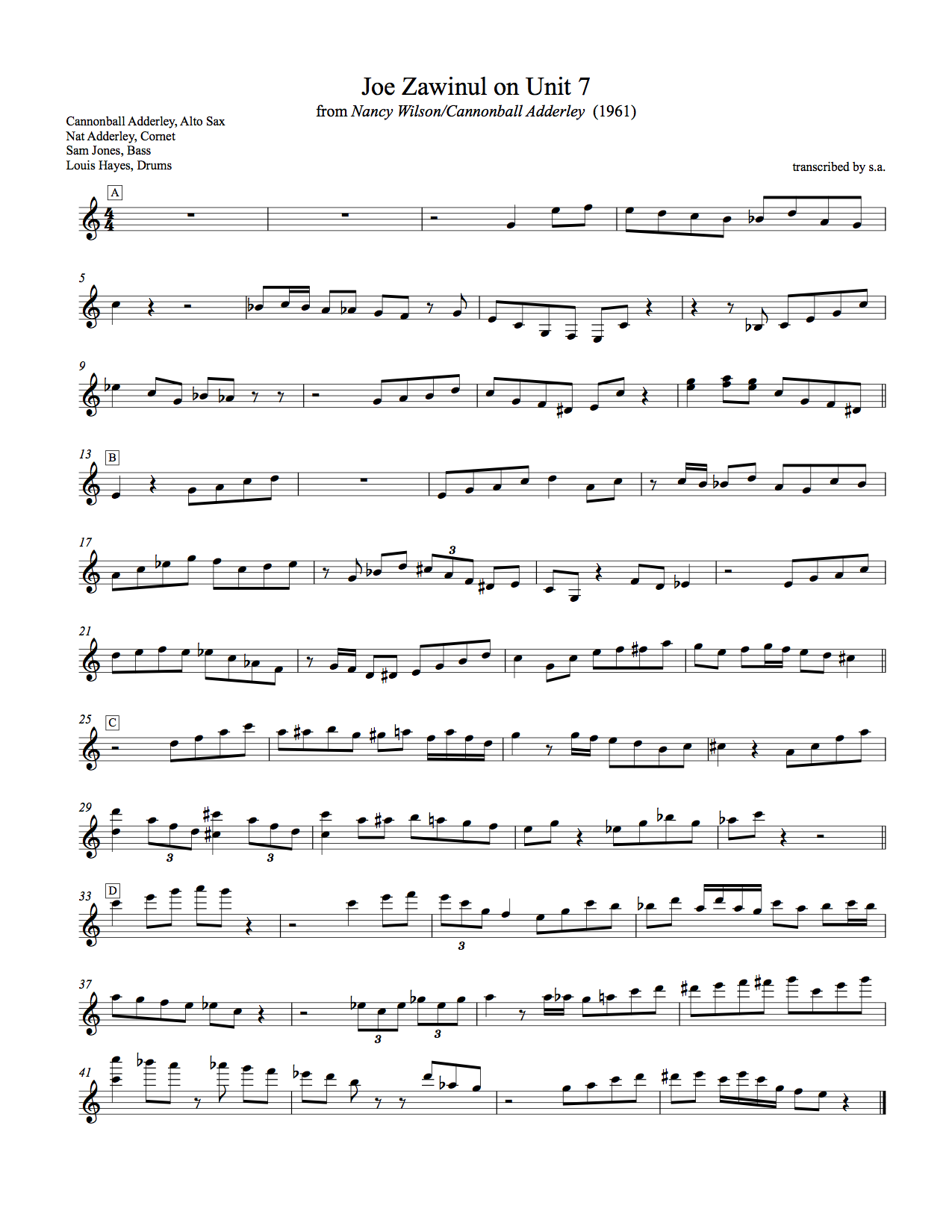The tune Duke’s Place is the opening track from the 1961 LP Louis Armstrong and Duke Ellington: Together For The First Time. The melody is probably better known as “C Jam Blues,” which is the original title of the instrumental version recorded by the Ellington band in 1942. (The track is currently available on the album The Great Summit which also includes material recorded at the same time but originally released separately.)
I have heard that Thelonious Monk’s unique piano style was influenced by Duke Ellington, and listening to this solo I can hear the connection. In particular, I enjoy Ellington’s use of motivic development and use of space.
He begins each chorus with a short, sparse idea and that grows and changes bit by bit. Notice the use of the half-step motive in the first twelve bars and the repeated use of the F sharp – G pattern in the second twelve.
Looking at the notated version, it seems like there are at least as many rests as there are notes, and you can hear the spaciousness in the recording. The melody really breathes in a way that is foreign to most piano players.




